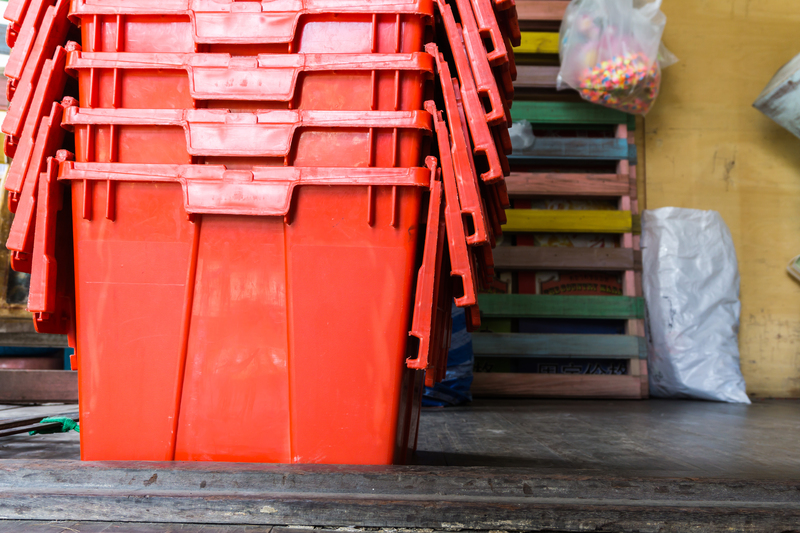Effortlessly Move Your Bed and Mattress with These Tips
Posted on 21/06/2025
Effortlessly Move Your Bed and Mattress with These Tips
Planning a big move or rearranging your bedroom? One of the trickiest tasks can be safely transporting your bed and mattress. With their bulky shape and weight, improper handling can result in damage, injury, or dirty, torn fabric. Luckily, there are smart strategies and tools that make moving your bed and mattress a smooth, stress-free experience. In this comprehensive guide, learn how to move beds and mattresses effortlessly--protecting your furniture, your back, and your sanity with proven tips.
Why Proper Mattress and Bed Moving Matters
If you've ever attempted bed relocation alone, you know the struggle: twisting through hallways, wrestling with stairs, and squeezing through doors. Many people underestimate the process, risking:
- Back strain or injury from improper lifting
- Scratches and scuffs on the bed frame or headboard
- Tears, dirt, or moisture on the mattress fabric
- Lost hardware that makes reassembling a headache
Planning ahead and using the right moving bed and mattress tips will reduce hassle, keep your sleeping furniture in top shape, and help you set up your new bedroom quickly.

Pre-Move Preparation: What to Do Before Moving Your Bed and Mattress
Gather the Essential Tools
Start by assembling the right tools and supplies for safely moving mattresses and beds. Here's what you need:
- Mattress bag or cover: Heavy-duty plastic mattress bags prevent dirt, moisture, and tears during transport.
- Moving straps or lifting straps: Help distribute heavy weight and reduce strain on your body.
- Furniture dolly: Lets you roll a heavy mattress or frame rather than carry it.
- Tool kit: Screwdrivers, wrenches, allen keys, and pliers for bed frame disassembly.
- Zip or storage bag: For storing bolts, screws, and hardware safely.
- Blankets and bubble wrap: To protect wooden parts, headboards, or upholstery.
- Tape and markers: For sealing and labeling items.
Clear a Path for Easy Movement
Map out your route from the bedroom to the front door or moving truck. Move obstacles such as lamps, rugs, or boxes out of the way. Measure doorways and narrow spaces to ensure your bed and mattress fit, avoiding stressful wedging at the last minute.
How to Move a Mattress Without Stress
Step 1: Clean and Protect the Mattress
Before you touch the mattress, remove all bedding--sheets, pillows, blankets--and pack them separately.
- Vacuum both sides of the mattress to remove dust and allergens.
- Wrap it completely in a mattress bag, sealing the ends with tape.
Tip: A waterproof mattress bag is crucial during rainy or snowy weather, providing an extra layer of protection.
Step 2: Enlist Help or Use a Dolly
The average queen mattress weighs between 60-75 pounds and can be awkward due to its size. For safe moving:
- Ask a friend, family member, or neighbor to help with lifting.
- Use lifting straps to share the load and avoid injury.
- For long hallways or apartment buildings, slide the mattress onto a furniture dolly and secure in place with straps.
Moving a mattress alone is not recommended unless you have special moving equipment designed for solo lifting.
Step 3: Maneuver with Care
- Keep the mattress vertical in tight spaces and hallways to avoid snagging.
- Take corners slowly, adjusting your grip as needed.
- Use extra caution when taking your mattress up or down stairs. Have one person at each end for control.
Do not bend or fold a spring mattress--this can cause permanent damage. Most hybrid, latex, and foam mattresses can tolerate gentle bending, but always check the manufacturer's recommendations.
Step-by-Step Guide: Moving a Bed Frame or Headboard
Step 1: Disassemble with Care
Most beds need to be broken down before moving. Here's how:
- Remove the mattress and box spring.
- Take off slats or any cross pieces.
- Unscrew the side rails from the headboard and footboard.
- Place all hardware in a zip bag and label it clearly for easy reassembly later.
Tip: Take photos as you go so you have a reference for how each piece fits together when reassembling your bed.
Step 2: Protect Bed Parts
Wrap wooden or upholstered parts--headboard, footboard, and rails--in moving blankets, foam, or bubble wrap. Secure with tape to prevent shifting during transport.
For ornate or antique beds, take extra care to cushion delicate carvings and avoid stacking other items on top of these pieces.
Step 3: Transport Safely
- Load the largest parts first, like headboards or platform bases, and stand them upright in the moving truck if possible.
- Secure with straps so they don't tip while driving.
- Don't place heavy boxes on top of delicate wooden panels or fabric headboards.
Effortless Bed and Mattress Moving Tips for Every Situation
Moving a Bed Within the Same Room or House
If you're rearranging furniture or moving to a different floor, it's still best to disassemble the bed frame unless it's a lightweight platform or metal type. For short-distance moves:
- Use sliders or towels under bed legs to minimize floor scratches.
- Get help lifting the mattress and maneuvering doorways.
- Enlist a second person for stairs.
Moving Beds and Mattresses in Apartments or Tight Spaces
City living or small apartments often mean narrow halls and awkward turns. Measure all access points first! In some cases, you may need to completely remove the door from its hinges for extra clearance.
Rolled or vacuum-packed mattresses--if purchased online--are often easier to move, but traditional beds require more effort.
How to Move a Mattress Without a Car or with Limited Transport
- Mattress moving bags with handles can be carried more easily by two people if you're going a short distance on foot.
- Renting a van or pickup truck is ideal for larger mattresses (queen size and up).
- Some rideshare and delivery services offer furniture or large item transport in major cities--search for furniture movers near me.
Special Tips for Moving Different Types of Mattresses
- Memory Foam: Flexible, often can be bent carefully for stairs, but protect from direct sunlight and sharp objects.
- Innerspring: Heavier, difficult to fold--must be kept flat to avoid spring damage.
- Latex: Also heavy, but flexes slightly. Be sure to have a tight-fitting cover for transport.
- Hybrid: Treat as a spring mattress--keep upright or flat, and avoid folding except according to manufacturer guidelines.
Crucial Mistakes to Avoid When Moving Your Bed and Mattress
Even seasoned movers make these mistakes, so watch out!
- Dragging the mattress directly on the ground: Causes rips, stains, and pushes dirt into the fabric.
- Losing hardware: Always use labeled bags for screws and bolts.
- Skimping on mattress protection: Without a cover, you risk exposure to dust, pests, and water.
- Improper lifting technique: Always bend your knees, not your back. Share the load!
- Stacking heavy stuff on top: Never pile other furniture on top of your mattress during transport.
How to Reassemble and Set Up Your Bed and Mattress Easily
Once you've arrived at your new place, set up your bed as soon as possible for a good night's sleep.
- Lay out all pieces and hardware in the bedroom so nothing is missing.
- Consult your photos or manual for which part goes where.
- Reassemble the frame first, making sure all screws and bolts are tightened securely.
- Add slats or crossbars if required, then the box spring.
- Remove the mattress cover and let it air out for an hour before placing bedding on.
Remember: Let your mattress fully expand if it is memory foam or was shipped rolled up.
Should You Hire Professional Bed and Mattress Movers?
For challenging moves--like steep stairs, narrow doors, or expensive beds--a professional moving service can provide peace of mind.
- Movers bring the right equipment and padding
- They are trained in safe lifting techniques to prevent back injuries
- They often include insurance in case of accidental damage
However, if you are moving a bed and mattress locally and can enlist the help of strong friends, you can save money by handling the move yourself--especially with these tips!

Bonus: Storage Tips for Beds and Mattresses
Sometimes, moving day and move-in day don't line up. To keep your bed and mattress in pristine condition while in storage:
- Store mattresses flat if possible--standing them upright long-term can distort support.
- Use a breathable cover to prevent mold or mildew.
- Keep beds and mattresses off the floor using pallets in a storage unit, to avoid accidental water damage.
Summary: Move Your Bed and Mattress With Confidence
Moving your bed and mattress doesn't have to be a painful ordeal. With proper planning, the right equipment, and these expert techniques, you can effortlessly move your bed and mattress whether it's to a new home, storage unit, or another room.
Let's recap the essentials:
- Gather necessary tools and supplies in advance
- Protect your mattress and bed frame with covers and padding
- Disassemble your bed for easier transport
- Ask for help and use moving straps or a dolly to make lifting safer
- Store all hardware in labeled bags for quick reassembly
- Be mindful of best practices for each type of mattress
Ready for a hassle-free bed and mattress move? Use this guide to keep your sleep sanctuary safe and sound--and reclaim your comfort from day one in your new space. Whether you move beds and mattresses often or it's your first big relocation, these tips will make your transition simple and successful.
Happy moving!





